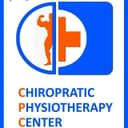Posture Problems - How They Can Be Set Right?
A significant number of people suffer from the adverse consequences of bad posture and yet do not alter the factors of their lives which cause them the problem. In fact, researchers believe that positioning your body poorly while standing, sitting, or during rest is a significant contributor to a whole host of back problems and other muscle and joint related issues. Good posture is essential for keeping fit, and if you have not paid attention to any of your posture problems, it's high time you did.
How poor posture is defined?
Poor posture is described as a situation where our spine is positioned irregularly, emphasizing the curves. This results in poor extended positioning that places stress on your vertebrae, muscles, and joints. Over time, this stress may severely weaken the very foundation of the body, and as a result, you may be plagued by a plethora of health problems.
Problems that arise from poor posture
Body pains and aches including upper or lower back pain, arm pain, and shoulder pain are widespread problems that arise from poor posture. Other possibilities include lower limb pain including hip and leg pain, ankle or knee pain, headaches and muscle fatigue, due to a buildup of the tension in the upper back, neck, and shoulders. A person who suffers from poor posture is seen to have symptoms such as rounded shoulders, hunchback, slouched structure, bent knees with head tilted forward.
Physiotherapy - A perfect cure for posture problems
A skilled physiotherapist can evaluate and diagnose your postural traits and help you grow a proper stance in which your back is straight, the chest is up and out, and your abdomen is perfectly tucked in.
A few strategies used by physiotherapists to improve poor posture are manual therapy and soft tissue massage, postural education and training, joint mobilization, pilates, and corrective exercises to improve flexibility and strength.
Exercises that can help
Specific physiotherapy posture exercises will help you develop proper posture. A few exercises that you can do every day are:
- Shoulder Blade Squeeze: Start standing tall with your neck and back straight. Clutch your shoulder blades together as much as possible. Stay for 5 seconds and repeat ten times for three to five times daily provided the exercise is pain-free.
- Cervical Retraction: Begin by seizing a chair and sitting straight with your feet reaching the floor. Raise your chin to the ceiling without nodding after a few deep breaths. Hold for 5 seconds and repeat ten times for three to five times daily.
- Chin Tucks: Begin standing tall or sitting with your back and neck straight. Shoulders should be slightly laid back. Tuck in your chin with no more than a mild to moderate stretch. Keep your nose and eyes facing forward. Hold for few seconds and repeat the same.
Walking or running every day too helps to correct posture. Standing tall and facing the world confidently indeed gives pleasure. Why wait? Reach out to a physiotherapist, and face the world with confidence.
In case you have a concern or query you can always consult an expert & get answers to your questions!



+1.svg)
